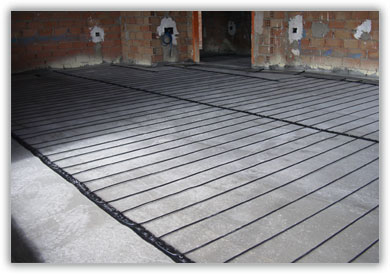AUTOLEVELLING FOAM
The chemical additive consumption which is according to a dry density between 400-450 kg/m3 it could be abridged between 0,8 and 1,2 kg per m3 for performing cellular concrete.
Nevertheless, it is not possible to provide an exact description of the chemical additive consumption due to the participation of the following factors:
TYPE OF CEMENT
Cements formulation take part in the capacity of skimming of the chemical additive, for this reason it is convenience to request mark and types. Our experience let us to be the best in the present market.
The differences of the chemical additive consumption due to this concept it could be of the double with one or other type of cement. The cement must be recent and not cold, if it is cold, it needs more chemical additive and it produces less resistance at the end.
Other concepts of less importance:
-Harder water or briries that consume more chemical additive.
-High temperatures in water, cement and generally of the atmosphere a major consumption of the chemical additive than smooth and fresh temperatures.
WATER
The water consumption depends on the temperature and the moist of the atmosphere, the state of the covering and the desire of performing cellular concrete more or less fluid.
RECOMMENDED DOSES OF WATER PER SACK OF CEMENT |
| Kg per sack of cemen |
Water litres |
| Recommended |
MIN |
MAX |
| 25 |
16 |
15 |
19 |
| 30 |
19 |
17 |
22 |
| 35 |
22 |
20 |
26 |
| 42,5 |
26 |
24 |
32 |
| 50 |
31 |
28 |
37 |
Quantities of water between 35 and 40 litres will be used when it desires low densities in moist atmosphere: 400-500 Kg/m3 in low filling height over very absorbent covers and also the weather is hotter and dry. It also increases the quantity of water if you desire that the cellular concrete will be more autolevelling.
 |
| CORRESPONDENCE BETWEEN MOIST DENSITY, DRY DENSITY, CONSUMPTION OF CEMENT IN Kg/m3 AND COMPRESSIVE RESISTENCE IN Kg/cm2 |
MOIST DENSITY(1)
Kg/m3 |
DRY DENSITY(2)
Kg/m3 |
CEMENT CONSUMPTION
Kg/m3 |
COMPRESSIVE RESISTENCE(3) |
THERMAL RESISTENCE(4)
m2 ºC / W |
THERMAL CONDUCTIVITY(4)
W / m ºC |
| Kg/cm2 |
MPa |
| 200 |
172 |
123 |
X |
X |
1.86 |
0.05 |
| 225 |
193 |
138 |
X |
X |
1.78 |
0.06 |
| 250 |
215 |
154 |
X |
X |
1.70 |
0.06 |
| 275 |
236 |
168 |
2.5 |
0.24 |
1.63 |
0.06 |
| 300 |
258 |
184 |
4.6 |
0.45 |
1.55 |
0.06 |
| 325 |
279 |
200 |
6.6 |
0.65 |
1.47 |
0.07 |
| 350 |
301 |
215 |
8.7 |
0.85 |
1.40 |
0.07 |
| 375 |
322 |
230 |
10.8 |
1.06 |
1.32 |
0.08 |
| 400 |
344 |
246 |
12.9 |
1.26 |
1.24 |
0.08 |
| 425 |
365 |
261 |
14.9 |
1.46 |
1.17 |
0.09 |
| 450 |
387 |
276 |
17.0 |
1.67 |
1.09 |
0.09 |
| 475 |
408 |
292 |
19.1 |
1.87 |
1.01 |
0.10 |
| 500 |
430 |
307 |
21.1 |
2.07 |
0.93 |
0.11 |
| 525 |
451 |
322 |
23.2 |
2.28 |
0.86 |
0.12 |
| 550 |
473 |
338 |
25.3 |
2.48 |
0.78 |
0.13 |
| 575 |
494 |
353 |
27.4 |
2.68 |
0.70 |
0.14 |
| 600 |
516 |
368 |
29.4 |
2.89 |
0.63 |
0.16 |
| 625 |
537 |
384 |
31.5 |
3.09 |
0.55 |
0.18 |
| 650 |
559 |
399 |
33.6 |
3.29 |
0.47 |
0.21 |
| 675 |
580 |
414 |
35.7 |
3.50 |
0.40 |
0.25 |
| 700 |
602 |
430 |
37.7 |
3.70 |
0.32 |
0.31 |
| 725 |
623 |
445 |
39.8 |
3.90 |
0.24 |
0.41 |
| 750 |
645 |
461 |
41.9 |
4.11 |
0.17 |
0.60 |
| 775 |
666 |
476 |
43.9 |
4.31 |
0.09 |
1.10 |
| 800 |
688 |
491 |
46.0 |
4.51 |
X |
X |
| 825 |
709 |
507 |
48.1 |
4.72 |
X |
X |
| 850 |
731 |
522 |
50.2 |
4.92 |
X |
X |
| 875 |
752 |
537 |
52.2 |
5.12 |
X |
X |
| 900 |
774 |
553 |
54.3 |
5.33 |
X |
X |
|